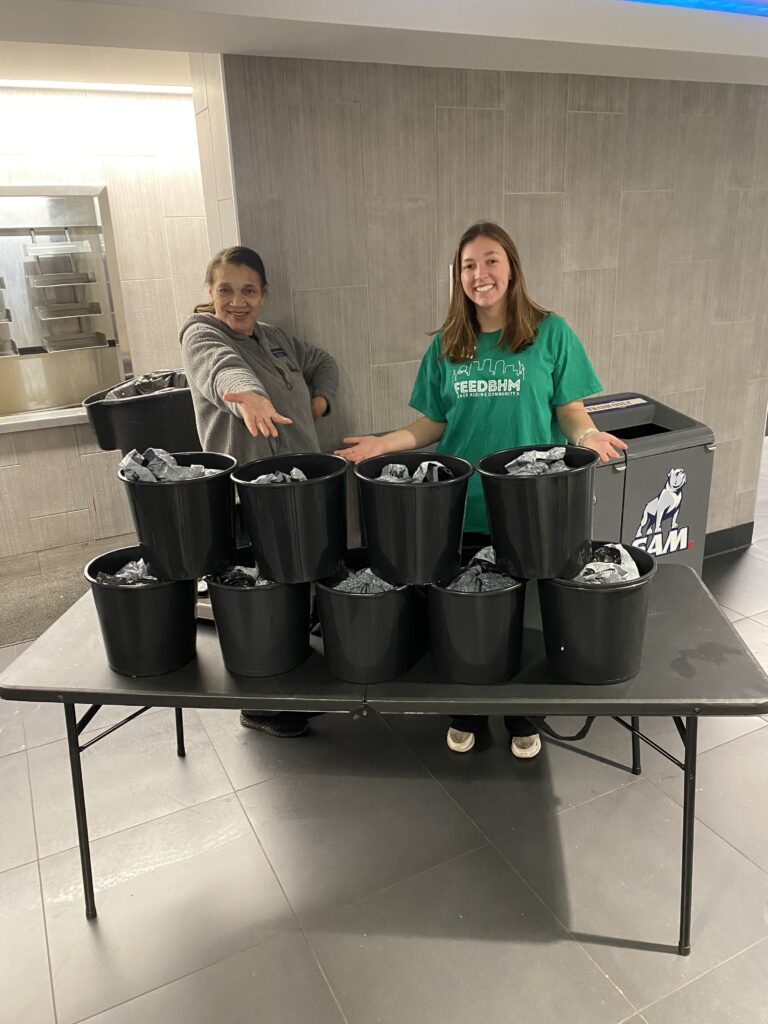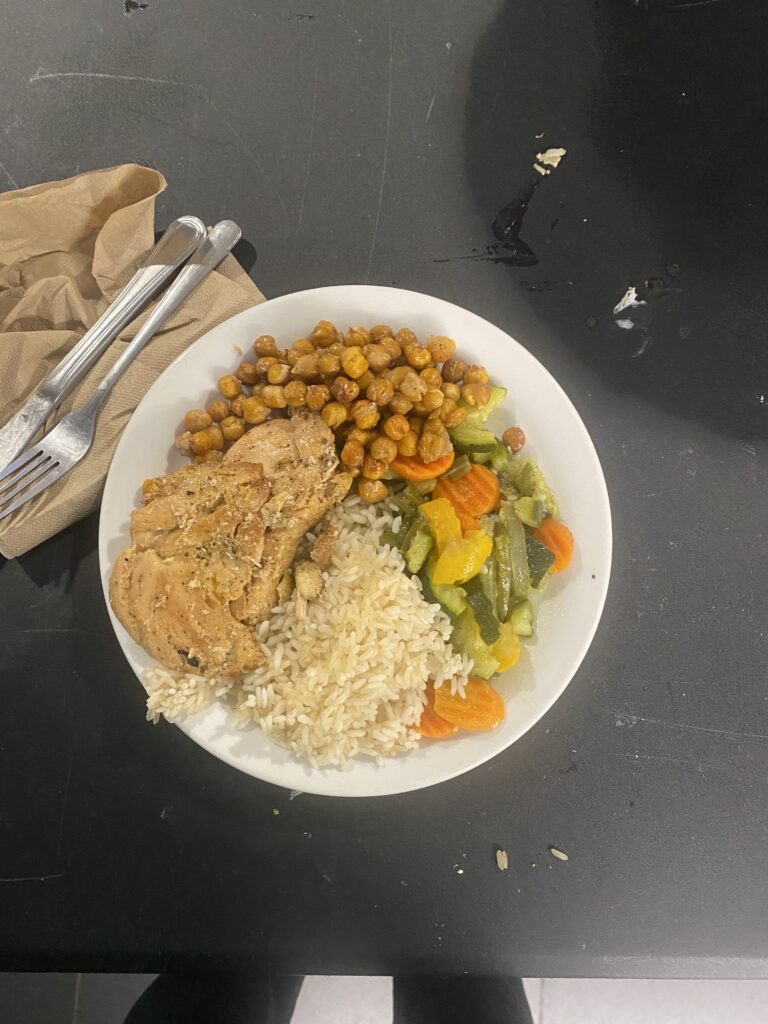On Wednesday, December 4th, Samford University and Grace Klein Community joined forces to conduct a social experiment on food waste at “The Caf,” Samford’s on-campus cafeteria. The goal? To educate the students, the future of our country, about the issue of food waste in the United States today.
Thomas Varytimidis, the General Manager of The Caf and employed by Aramark, graciously allowed Grace Klein Community (GKC) to set up two tables near the dish return area at the busiest time of the day, the lunch rush between 11:30am and 1:30pm. GKC staff members and interns encouraged students to scrape any leftover food from their lunch plates into small collection buckets. The purpose of this experiment was to measure how much food was being wasted, with the collected scraps weighed at the end of the event.
The data was then analyzed to estimate how many people Samford could potentially feed in a week using the food that was wasted during a single lunch period. The results?

Samford could feed approximately 1,600 people a week using just the food left on students’ plates at the end of their dining experience!
In the two-hour experiment timeframe, GKC collected 103.1 pounds of lunch scraps, which filled nine medium-sized buckets. An appropriately portioned adult meal, consisting of three components, typically weighs between .9 and 1.2 pounds. By dividing the 103.1 pounds of lunch scraps by 1.2 pounds—the upper limit of an average meal—we calculated that 85.9 meals could have been prepared with the collected scraps. When 85 meals are extrapolated across the 19 meals served weekly at The Caf, this equates to 1,615 meals that could potentially be provided to those in need—just from lunch leftovers!


Several factors contribute to cafeteria food waste, and no single individual is at fault. One common issue is students often don’t finish their meals, with their eyes being bigger than their stomachs. In a two-hour lunch period, one GKC intern tallied 346 students who scraped their plate, plus a few students who did not scrape their plate. Two students claimed and admitted when scraping their plates “dang, the one day. . . I usually don’t waste food”.
Additionally, feedback from five students indicated the green beans served were over-seasoned, which contributed to uneaten portions, which is an easy issue to adjust. Another significant factor is portion control, as most food stations are not self-serve; instead, cafeteria staff determine serving sizes for students. Samford leadership and cafeteria staff can empower students to ask for half-portions and come get seconds they are still hungry.
A GKC female staff member observed the impact of portion control firsthand. Toward the end of the social experiment, a kind, anonymous female Samford student offered to share one of her meal swipes with the staff member. The student returned with a full plate. While the food was delicious, the portion size was overwhelming—even for the very hungry staff member. The plate included two chicken breasts, rice, mixed vegetables, and a generous serving of chickpeas, proving too much to finish.

Mia Moses, a junior communication sciences and disorders student who is a dedicated GKC volunteer, jumped right in and started helping direct students away from their normal routine during the rush. She assisted our GKC staff and interns for about 30 minutes, and her insight is invaluable. She quotes, “I want Samford students to be willing to have a perspective shift around food waste. Before I moved to Birmingham and started volunteering with Grace Klein community, I did not know the value of food or how much food is wasted in our country” and at The Caf that day, “within a matter of minutes, we had a mound of excess food from the cafeteria. I learned so much in that few minutes.”
This social experiment exemplifies Samford University’s dedication to educating its student body about food waste reduction and sustainability. Samford supports these efforts through their Sustainability Committee, whose mission is to decrease waste and promote effective resource management across campus.
The Samford Cafeteria is also committed to minimizing food waste. At the end of each day, the cafeteria staff donates all surplus prepared food to Grace Klein Community, where it is redistributed to individuals and families facing food insecurity. The social experiment on food waste was an educational experience for all involved.
Mia Moses adds our takeaway, “We waste food unintentionally; I too used to waste food without hesitation. I want Samford students and the university as a whole to own our food waste and do something about it. The issue of hunger and food waste is not an out of reach social problem – it is right here on our campus and in Birmingham. As a Christian University, I desire our campus to be known as good stewards of our resources, both with money and food. I pray that the initiative to stop food waste on campus and feed the hungry begins with our leadership, spreads through the student body, and extends into our community.”
The harsh reality is food waste is all around us. You can help Feed BHM by donating your overage food, funds, resources, or time to Grace Klein Community!

Contact grace@gracekleincommunity.com with any thoughts, questions, or locations where you want to repeat this experiment!